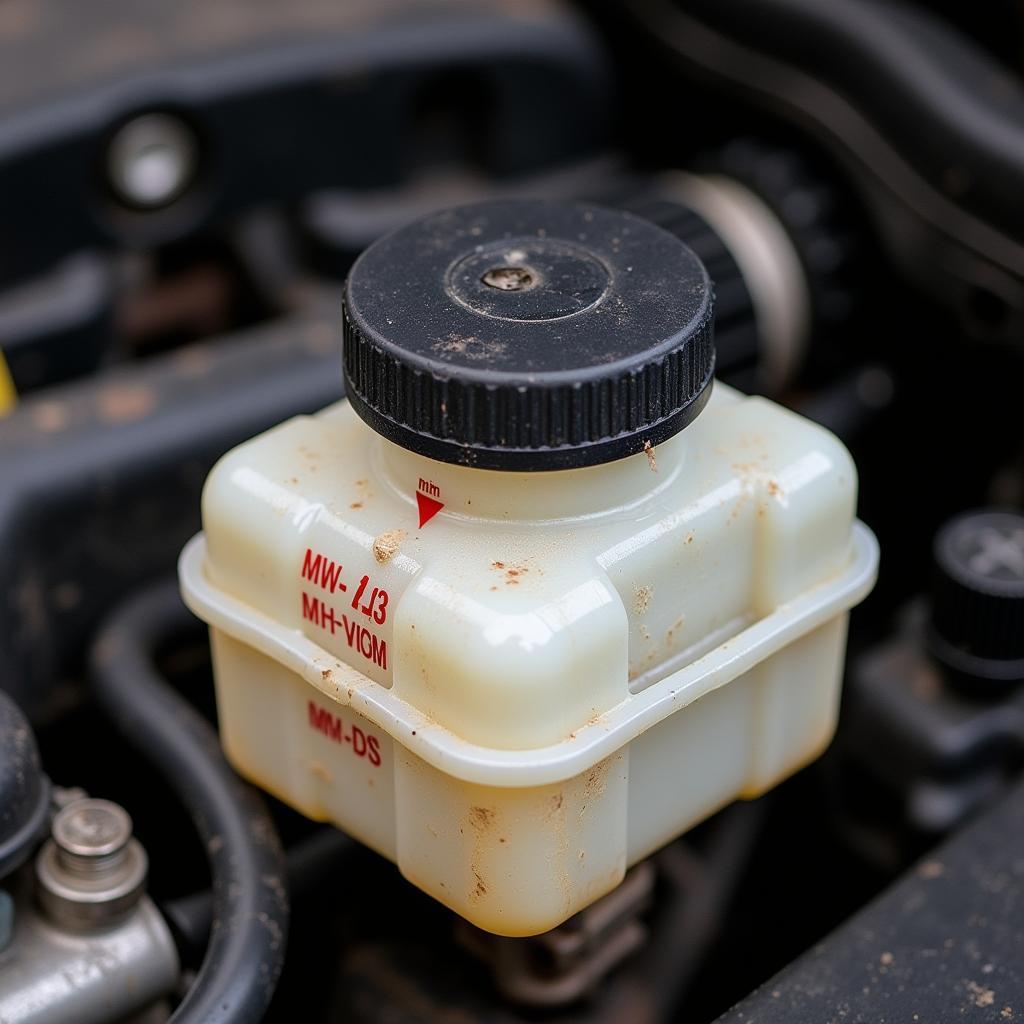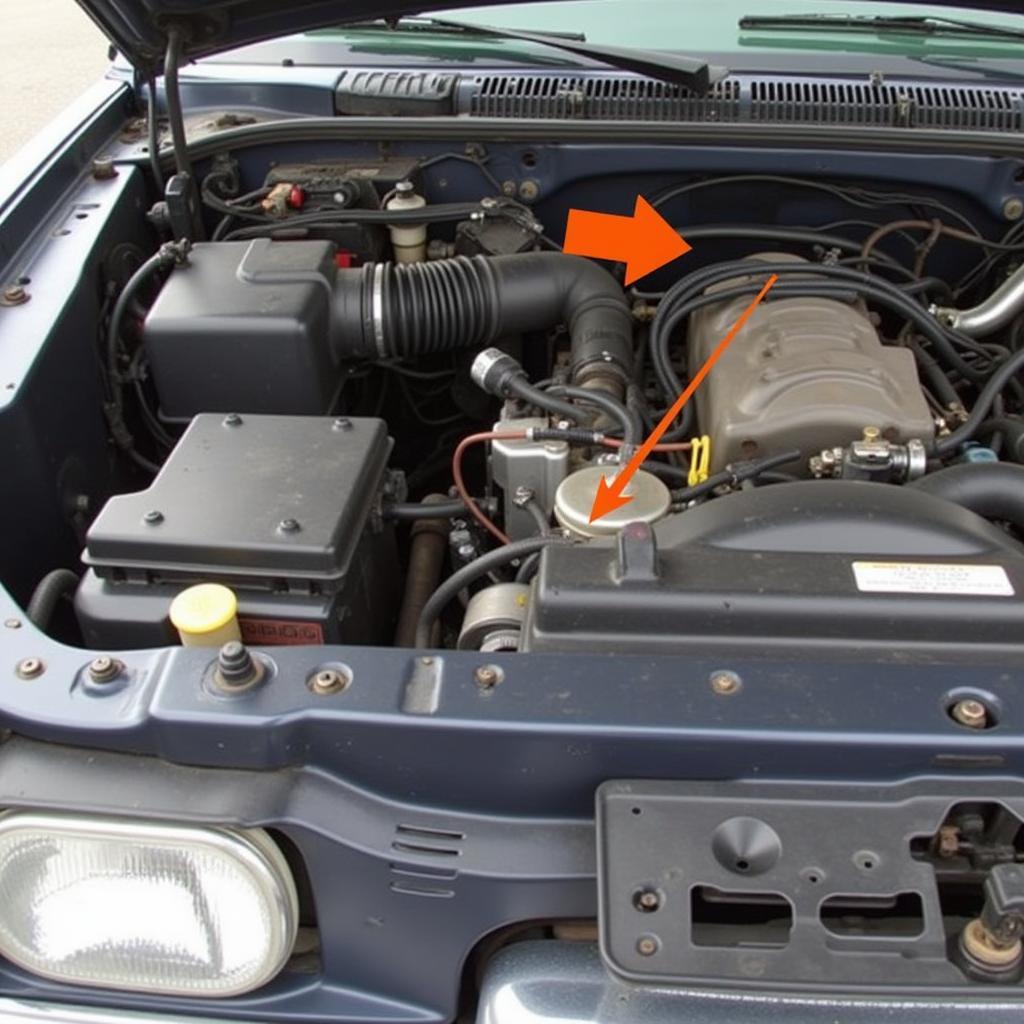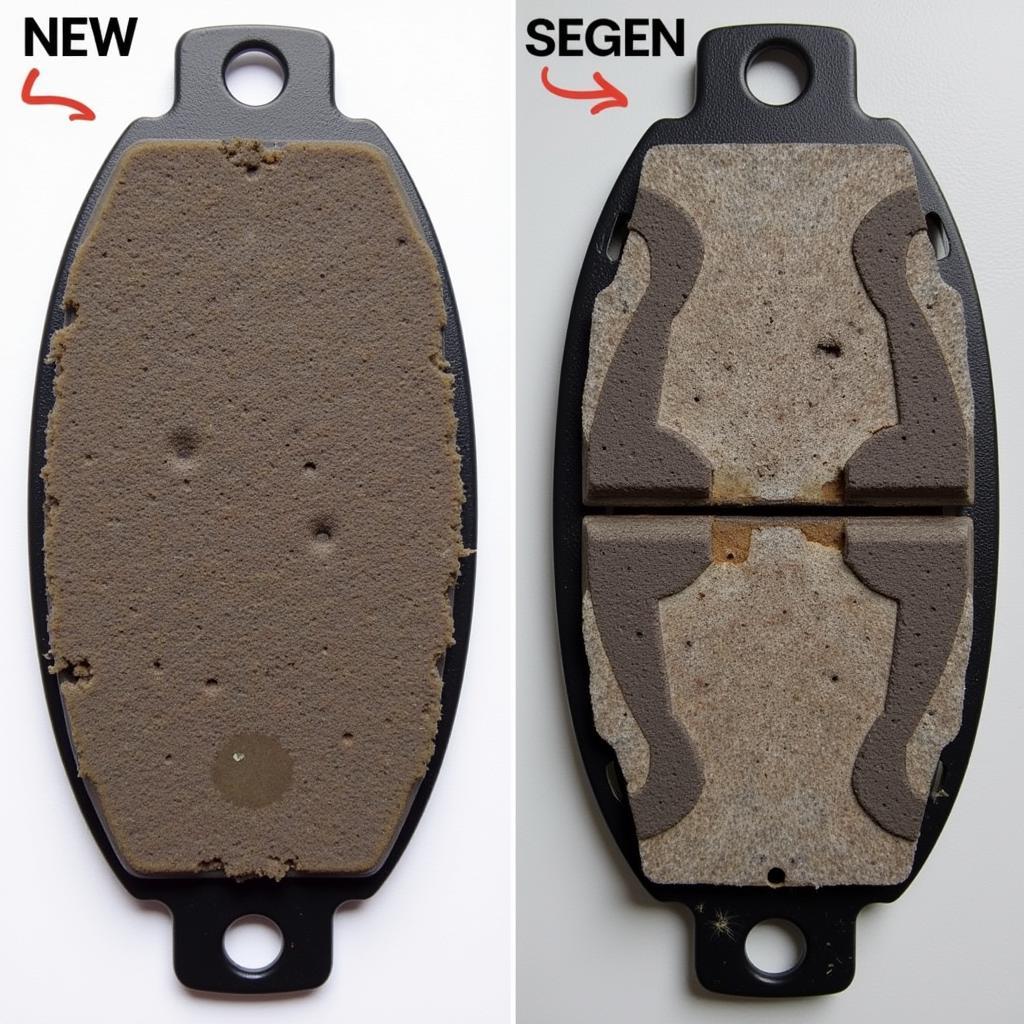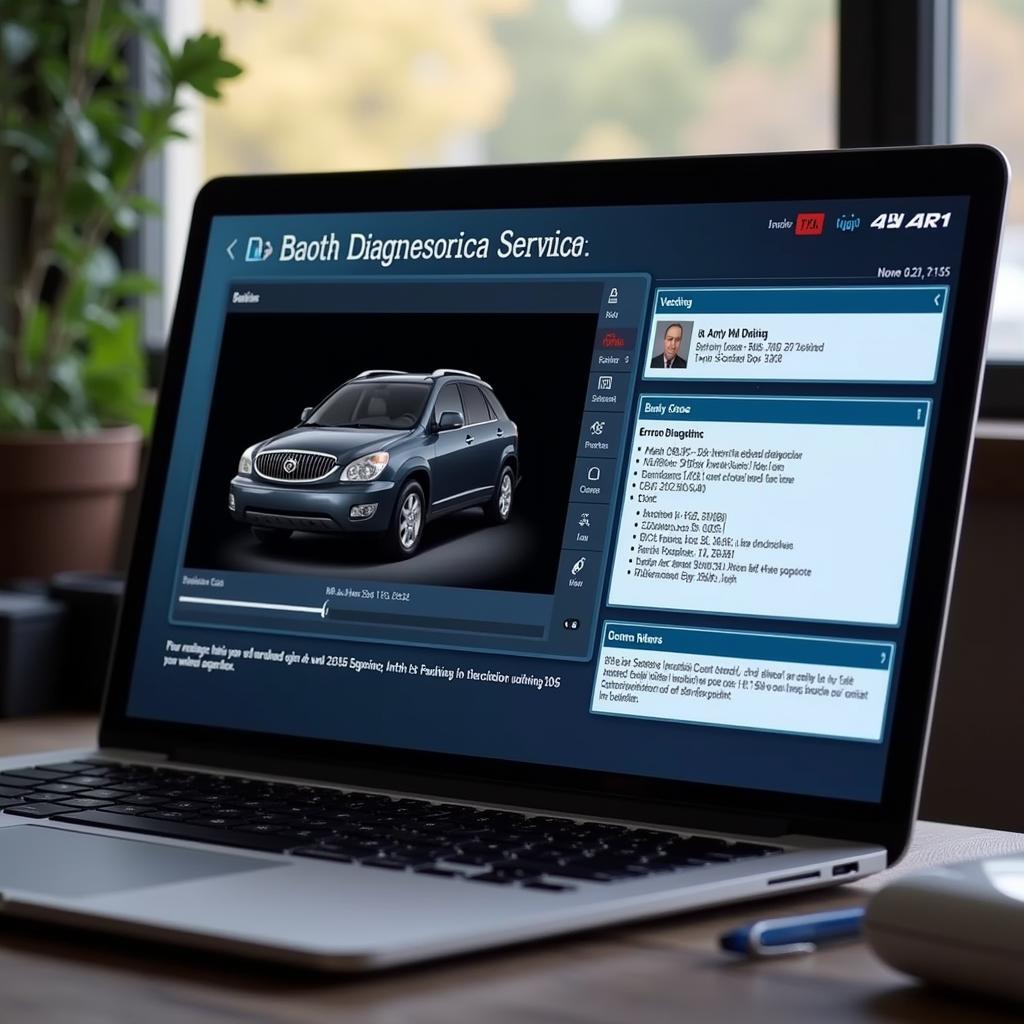If you’re driving a GMC Topkick and see both the primary brake and auxiliary brake warning lights illuminated, it’s a signal that something isn’t right with your braking system. This situation demands immediate attention as it indicates a potential failure in both your primary and secondary braking systems. While this can seem daunting, understanding the potential causes and troubleshooting steps can help you get back on the road safely.
Deciphering the Warning Lights
The primary brake warning light, often a red circle with the word “BRAKE” inscribed, indicates an issue with your main hydraulic braking system. This system is what you use daily to slow down and stop your Topkick.
The auxiliary brake warning light, usually amber or yellow and may be labeled “AUX BRAKE” or display a similar symbol, points towards a problem with your secondary or parking brake system. This system is crucial for holding your vehicle stationary, especially on inclines.
When both lights illuminate simultaneously, it suggests a potential issue affecting both systems or a fault in the electrical system responsible for the warning lights.
Common Culprits Behind the Dual Warning Lights
1. Low Brake Fluid Level:
One of the most common reasons for both warning lights to activate is a low brake fluid level. As brake pads wear down, the brake calipers need more fluid to function correctly. If the fluid level drops too low, it can trigger both warning lights.
 Low Brake Fluid Reservoir
Low Brake Fluid Reservoir
2. Faulty Brake Pressure Sensor:
Your Topkick uses sensors to monitor brake fluid pressure. A malfunctioning sensor can send incorrect signals to the vehicle’s computer, leading to both warning lights illuminating even if the brake fluid level is adequate.
 Brake Pressure Sensor Location
Brake Pressure Sensor Location
3. Worn-out Brake Pads:
As your brake pads wear down, they can trigger the primary brake warning light. In some cases, extremely worn pads can create enough of a discrepancy in the hydraulic system to activate the auxiliary brake light as well.
 Worn Brake Pads Comparison
Worn Brake Pads Comparison
4. Electrical Issues:
A short circuit, blown fuse, or wiring problem within the braking system can disrupt the warning light system, causing both to illuminate. While less common, it’s crucial to rule out electrical issues during troubleshooting.
5. ABS Module Malfunction:
Though less frequent, a malfunctioning Anti-lock Braking System (ABS) module can also trigger both warning lights. The ABS system interacts with the primary braking system, and a fault in the module can disrupt its operation.
Troubleshooting Steps
If you’re facing this issue, it’s crucial to address it without delay. Here are some troubleshooting steps:
-
Check Brake Fluid Level: Park on a level surface, open the hood, and locate the brake fluid reservoir. Check the fluid level against the minimum and maximum markings on the reservoir. If it’s low, add the correct type of brake fluid as specified in your owner’s manual. However, simply adding fluid won’t solve the issue if there’s a leak or another underlying problem.
-
Inspect for Leaks: Carefully examine the area around the master cylinder, brake lines, and calipers for any signs of brake fluid leaks. A leak will require immediate attention from a qualified mechanic.
-
Inspect Brake Pads: If you’re comfortable with basic car maintenance, you can visually check your brake pads. If you see very little pad material remaining, they need replacing.
“Worn brake pads not only compromise your stopping power but can also damage other brake components if ignored. Regular brake inspections are key to avoid costly repairs,” advises Mark Hernandez, a seasoned automotive technician with over 20 years of experience.
-
Consult a Professional: If you’re unable to identify the issue yourself or if the warning lights persist after adding brake fluid and inspecting for leaks, it’s crucial to seek professional help.
“Attempting to diagnose complex brake system issues without proper knowledge and tools can be dangerous. It’s always best to err on the side of caution and consult a qualified mechanic,” emphasizes Hernandez.
Remote Diagnostics and Programming: A Modern Solution
In today’s digital age, remote diagnostics and programming offer a convenient and efficient solution for certain automotive issues. By connecting your Topkick to a specialized software program, a remote technician can analyze your vehicle’s data, pinpoint the root cause of the warning lights, and even reprogram certain modules if necessary.
While remote solutions may not be suitable for all brake-related problems, particularly those requiring physical repairs, they can save you time and hassle in many instances. For example, if a faulty sensor is triggering the warning lights, a remote technician might be able to diagnose and reset it without you needing to visit a repair shop.
Conclusion
Seeing both the primary and auxiliary brake warning lights on your GMC Topkick is a clear indication of a problem within your braking system. Addressing this promptly is crucial for your safety and the well-being of your vehicle. By understanding the potential causes and following the recommended troubleshooting steps, you can take the right action to ensure a safe and enjoyable driving experience.

